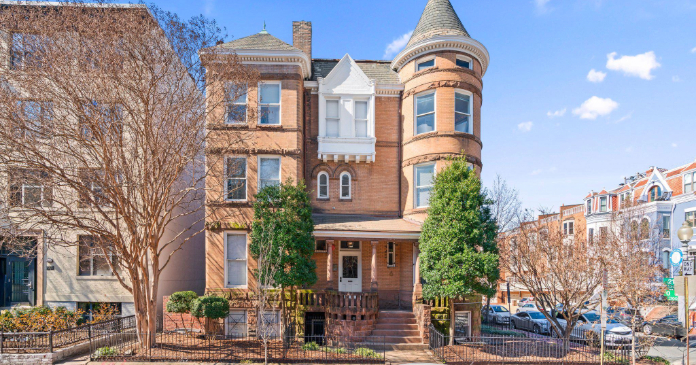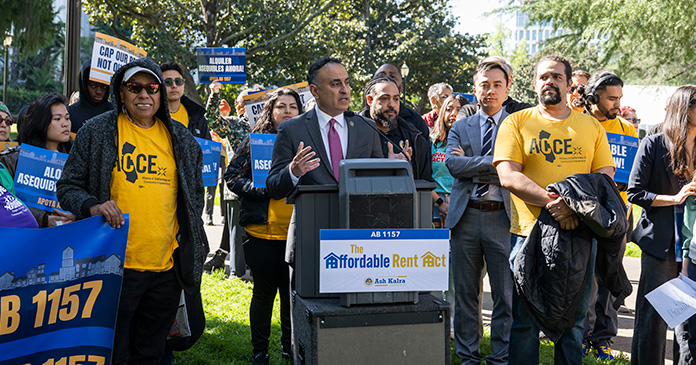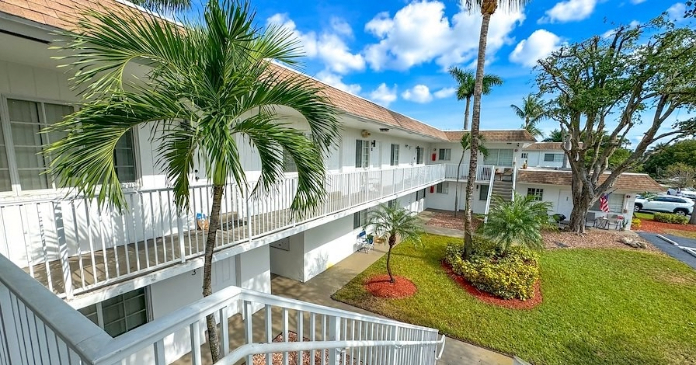The first market-rate apartments created in Downtown Newark, N.J., in more than 40 years are nearly complete. Since pre-leasing began last August, the 317 units at Eleven80 have rented at an impressive rate of about 25 a month. Inspired by that rapid lease-up, New York City-based Cogswell Realty Group LLC (CRG), the developer responsible for the project, plans to deliver another 3,254 new apartments to the downtown area over the next decade, beginning next year with the $85 million historic reconstruction of the long vacant Hahne and Griffith buildings across the street from Eleven80 into 253 rental loft- and duplex-style units, 90,000 sq. ft. of retail and a 250-space parking garage. The two buildings will be connected by a lobby. Completion is scheduled for mid-2009.
“Newark hasn’t had an unsubsidized apartment project like Eleven80 since the Colonnade,” said CRG CEO Arthur Stern, referring to a 20-story rental tower that overlooks Branch Brook Park, Newark’s equivalent of New York’s Central Park. The Colonnade Park and its two sister buildings, the Pavilion Apartments, were designed by renowned architect Ludwig Mies van der Rohe and built by Herbert S. Greenwald and Samuel Katzin in the 1960s to attract middle-income families to an area dominated by low-income rentals.
CRG is at the vanguard of a renaissance taking place in Newark today. Named after the Cogswell Cogs, a fictional company that always prevailed over its competitor, Spacely Sprockets, in one of television’s most successful cartoon sitcoms, The Jetson’s–about a futuristic family–the 11-year-old, full service real estate company that specializes in historic renovation and adaptive reuse of underutilized office buildings in the Tri-State area owns or manages more than five million sq. ft of real estate in New York City, Long Island and New Jersey, 1.2 million sq. ft. of which is in Downtown Newark.
Eleven80, the 77-year-old art deco treasure named for its address at 1180 Raymond across from Military Park, is CRG’s first residential project in Newark. The company’s previous redevelopments in the city have been office renovations. Although it sat empty for more than two decades, in better days Newark’s second tallest office structure housed a number of prestigious law firms. CRG paid $2.2 million in 1999 for the 35-story building with the idea of converting it into student housing. Those plans never materialized and, in 2000, the company started the $119 million renovation program that would transform the landmark into upscale apartments and 10,000 sq. ft. of ground-floor retail, including a TD Bank North and a grocery store.
Changing perception
It took CRG six years to assemble the financing for Eleven80. Stern said the company prevailed only by refusing to take no for an answer. “One of the hurdles we had to face came down to the word ‘perception,'” said Stern. “Newark has been down so long, the public’s perception of that market lagged way behind reality. Perception hits you in a number of ways. For instance, when you are talking to the state about getting behind a project like this– they didn’t firmly believe it could happen. The city itself was behind it, but didn’t always have the resources to act. Certainly the private market on the financial side wasn’t ready to embrace it when we first started and there wasn’t an active investment community that believed in it either,” said Stern.
Tired of waiting, CRG took a huge risk in the summer of 2005 and began renovating 1180 Raymond without construction financing. Until seven tranches of financing came through in December of that year, the company spent about $3 million of its own money each month, said Stern. By the time CRG received a $46 million construction loan from a banking consortium led by Bank of America and including Banco Popular, City National Bank and Bankcorp, Inc., the company invested $15 million of its own equity.
Other pieces of the complex financing puzzle included $5 million in mezzanine debt from the Prudential Insurance Company of America, $5 million each from the New Jersey Housing and Mortgage Finance Agency and Fannie Mae’s Historic Communities Fund I, another $19.8 million (20 percent of project costs) from the sale of historic tax credits to Fannie Mae and $7.9 million in 30-year, taxable redevelopment area bonds, purchased by MMA Financial LLC, from the New Jersey Economic Development Authority.
In 1998, Lehman Brothers Holdings, Inc., which partnered with CRG in 1997 on the acquisition and rehabilitation of 744 Broad St., formed another partnership with CRG for the redevelopment of Eleven80. That JV is called 1180 Astro Urban Renewal Investors LLC, named after the Jetsons’ canine pal. Lehman signed on as partner for the company’s Hahne’s Griffith project in 2002.
From blight to bright
No doubt a major catalyst for Downtown Newark’s revival and ultimate transition into what many hope will be a vibrant 24/7 community was the $190 million New Jersey Performing Arts Center (NJPAC), which opened to rave reviews in 1997. Skidmore, Owings and Merrill drafted the stadium’s master plan to include plazas and pedestrian boulevards that connect to major thoroughfares, a departure from previous redevelopment schemes the city had considered that involved connecting most major downtown office buildings via skyways.
The opening of a new baseball stadium for the Newark Bears followed on the heels of the NJPAC. The Prudential Center, the 18,000-seat hockey arena that is home to the National Hockey League’s New Jersey Devils, celebrated its topping off on March 21 and will open to the sounds of New Jersey’s homegrown rockers, Bon Jovi, on October 25. A new light rail that runs through the CBD has made it easier for those living in the Washington Park area to access Newark Penn Station, located just three blocks from Prudential Center and one block from Eleven80. And, CRG’s $55 million restoration of 744 Broad St. brought Newark’s tallest office structure back to its former neo-classical glory. When CRG purchased it in 1998 for $7.5 million, the building that once was 80 percent occupied by prestigious law firms and the 744 Broad Street Club, a private dining club of prominent bankers, attorneys and politicians from around the state, was more than 80 percent vacant. Today it is known as the crown jewel in Newark’s renaissance.
“The arts center changed the attitude of what’s possible in Newark,” said Stern, adding that, although the market is certainly evolving, today’s residents of Eleven80 are still considered pioneers.
It’s not too difficult to understand why people haven’t been clamoring to move to the city that earned the reputation as the murder capital of the East Coast (Newark has three times the number of homicides per capita as New York City) and a place overflowing with stolen cars. Newark fell into decline in the 1960s, and its downhill slide was exacerbated by the race riots that rocked the city in 1967. Devastated by job loss, bad urban renewal planning that destroyed whole neighborhoods along with the city’s original grid, suburban flight, corruption and mismanagement, Newark’s downtown had become a ghost town at night, when office workers rushing to get out of the city were replaced by shadowy drug dealers and other criminals.
But Newark has several things in its favor that some other post-Industrial cities lack–a top-notch location in the center of the Washington, D.C.-New York City corridor, two miles north of Staten Island, and the fifteenth busiest port facility in the world, Port Newark, which serves as the major container shipping port for New York City.
CRG and other developers are working hard to promote the idea that Newark, with its Gothic cathedrals, art deco architecture and proximity to Manhattan, just five miles west, is a cool place to live and a lower priced alternative to housing in the city that never sleeps. There is evidence that view is slowly taking hold. Stern says a majority of Eleven80’s tenants are echo boomers who work in New York City, but have been priced out of New Jersey’s Gold Coast and the fashionable New York boroughs east of the Hudson River.
Although Newark’s population declined from 400,000 in the 1960s to an estimated 282,000 today, the city gained 10,000 new residents over the past five years. Around 48,000 college students and professors live in Newark, and 120,000 people are employed there. Stern thinks that demographic is under served by housing options today.
“So obviously we are trying to capture that market, as well as those who are looking for the next new place from where it’s convenient to get to work. Eleven80 is close to New Jersey transit, which is the best in the Tri-State area, five minutes from Newark Airport and Port Newark and near all major highways running in four directions and every train line in and out of the city is within two blocks,” Stern pointed out.
The art deco structure itself is impressive, with its original marble walls, terrazzo flooring and restored brass elevator doors. “Everyone thinks its one of the nicest buildings they’ve seen as far as a blending of old and new architecture,” said Stern. The studio, one- and two-bedroom apartments feature expansive glass windows that offer spectacular views in all directions from the upper floors and, from the north and east sides, the Empire State Building can be seen. Luxury finishes include electric stainless steel appliance packages, black absolute granite counter tops, porcelain tile flooring and marble bathrooms, as well as hardwood floors in the living areas, carpeted bedrooms, open kitchens and in-unit washer-dryers. An 8,000 sq. ft. health club with steam rooms and sauna, a four-lane bowling alley and indoor basketball half-court, a billiards room and social lounge with flat screen TV and a Pilates studio round out the community amenities.
“The philosophy behind these amenities is two-fold. We had to give people a compelling reason to move to Newark by offering them a better quality of life in their apartment building then they can get elsewhere for less rent. We offer a far better lifestyle within the building than what they can get elsewhere within the Tri-State area at a price that is less than half of what they would pay in Manhattan,” said Stern.
Rents at Eleven80 start at $1,550 for a 589 sq. ft. studio and $2,350 for a 1,330 sq. ft. two-bedroom. “The average size of the units is 864 sq. ft. and in Manhattan a condo that size would sell for about $1.2 million and you’d have a line at the door at $1.1 million,” said Stern.
With development of another 3.5 million sq. ft. around Military Park on the drawing board, including the Hahne-Griffith redevelopment, designed by Cetra Ruddy, Stern expects to stay in Newark for the long haul. CRG recently started 47 units of for-sale coop housing on a ground lease parcel in Harlem and was awarded two key sites for development of co-op housing in Manhattan. “We continue to see the focus of our firm shift to the residential markets because that is where we see the best opportunities,” said Stern.
















